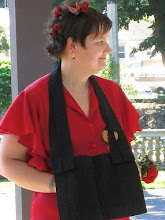Surya - The sun, a reference the the solar deity in the Vedic tradition
Namaskar - A salutation, particularly to a deity. Comes from the root word, Namas which means 'to bow to' or 'to adore'. Related to namaskarasm, a salutation to another person.
Sun Salutation
In the Vedas there are references to the many benefits of prosperity and good health gained from a daily practice of praising sun god. Physical prostrations to the sun were not only a gesture of absolute surrender, but a vehicle to maintain the health of the body.
In some of the Vedic hymns it was suggested that Suyra Namaskar be a daily practice for devout Hindus. Sun salutations are an integral part of the practice of Ashtanga Vinyasa Yoga.
There are many different variations of Surya Namaskar, all share a focus of moving with the energy of the breath. In a complete sun salutation the series is done two times, alternating the movement of the first leg that is either stepped forward or back to finish a full salutation.
Classical Surya Namaskar
Surya Namaskar A
Namaskar - A salutation, particularly to a deity. Comes from the root word, Namas which means 'to bow to' or 'to adore'. Related to namaskarasm, a salutation to another person.
Sun Salutation
In the Vedas there are references to the many benefits of prosperity and good health gained from a daily practice of praising sun god. Physical prostrations to the sun were not only a gesture of absolute surrender, but a vehicle to maintain the health of the body.
In some of the Vedic hymns it was suggested that Suyra Namaskar be a daily practice for devout Hindus. Sun salutations are an integral part of the practice of Ashtanga Vinyasa Yoga.
There are many different variations of Surya Namaskar, all share a focus of moving with the energy of the breath. In a complete sun salutation the series is done two times, alternating the movement of the first leg that is either stepped forward or back to finish a full salutation.
Classical Surya Namaskar
- Begin in Tadasana with hands in Anjali Mudra
- Bring the arms overhead (urdhva hastasana) on an inhalation
- With the exhalation move to Uttanasana
- Inhale up onto finger tips, with a flat back (Ardha Uttanasana)
- Exhale, step back with one foot into a lunge (begin with right foot, second time through begin with left)
- Inhale the arms overhead into a full lunge, either high or low
- Exhale, step back the front foot into Plank pose and lower through Chaturanga Dandasana
- Inhale up into Bhujangasana
- Exhale, lifting up into Adho Mukha Svanasana and inhale through
- Exhale, the first foot forward between the hands into a lunge
- Inhale the arms overhead
- Exhale, stepping into Uttanasana
- Inhale, coming up to Tadasana, Urdhva Hastasana
- Exhale, returning hands to Anjali Mudra
Surya Namaskar A
- Begin in Tadasana with hands in Anjali Mudra
- Bring the arms overhead (urdhva hastasana) on an inhalation
- With the exhalation move to Uttanasana
- Inhale up onto finger tips, with a flat back (Ardha Uttanasana)
- Exhale, jumping or stepping back into Plank pose and lower through Chaturanga Dandasana
- Inhale up into Urdhva Mukha Svanasana
- Exhale, lifting up into Adho Mukha Svanasana and hold through 5 complete breaths
- Exhale, jumping forward to Uttanasana
- Inhale, coming up to Tadasana, Urdhva Hastasana
- Exhale, returning hands to Anjali Mudra
- Begin in Tadasana with hands in Anjali Mudra
- Bring the arms overhead and bend knees into Utkatasana on an inhalation
- With the exhalation move to Uttanasana
- Inhale up onto finger tips, with a flat back (Ardha Uttanasana)
- Exhale, jumping or stepping back into Plank pose and lower through Chaturanga Dandasana
- Inhale up into Urdhva Mukha Svanasana
- Exhale, lifting up into Adho Mukha Svanasana
- Inhale first foot up between hands and up into Virabhadrasana I
- Exhale, jumping or stepping back into Plank pose and lower through Chaturanga Dandasana
- Inhale up into Urdhva Mukha Svanasana
- Exhale, lifting up into Adho Mukha Svanasana
- Inhale second foot up between hands and up into Virabhadrasana I
- Exhale, jumping or stepping back into Plank pose and lower through Chaturanga Dandasana
- Inhale up into Urdhva Mukha Svanasana
- Exhale, lifting up into Adho Mukha Svanasana and hold through 5 complete breaths
- Exhale, jumping forward to Uttanasana
- Inhale, coming up to Utkatasana
- Exhale, return to Tadasana, hands in Anjali Mudra
Benefits:
- In addition to the benefits from each posture individually, practice of Surya Namaskar also helps by energizing and warming the body, which may help to expel toxins
- Vigorous nature of the series may help tone and slim the body overall
- Reduces stress and anxiety
- People with back injuries should be careful with this pose, may want advice of physician.
- Women after the third month of pregnancy, although this may vary greatly
- Those suffering from high blood pressure should seek the advice of a physician
- As this vinyasa is very warming people with multiple sclerosis may need to do series much more slowly in order to not feel the affects of heat in the blood.




